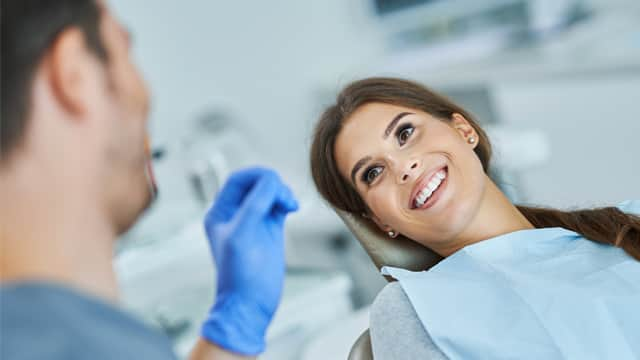Even though it's rare, there are some treatment options out there that can offer relief. So if you've been diagnosed, we'll make sure you have all of the info you need to understand what's going on. As you read on, we'll look into what OMD is, who gets it, the symptoms and effects of it, and how to treat it.
What Is Oromandibular Dystonia (OMD)?
As we mentioned above, OMD is a rare disorder that causes uncontrollable tonic muscle contractions in the face, jaws, and tongue. The contractions can happen when the jaw opens or closes and with tongue movement as well. These movements can make chewing and speaking quite difficult. Other parts of the body can also experience similar contractions of muscles, resulting in postures. Tongue dystonia (aka lingual dystonia) is a specific type of oromandibular dystonia where the tongue muscle contractions are activated by speaking or eating.
Symptoms usually begin at some point later in life, between the ages of 40 and 70 years. It also appears that women are four times more likely than men to develop OMD.
Symptoms and Effects of Oromandibular Dystonia (OMD)
Symptoms can vary from mild to severe and can even fluctuate from day to day. The movements and contractions of OMD can influence the body and the mouth and interfere with eating and drinking. Fatigue is also common due to the energy required to speak and maintain the position of the jaw. Associated dental issues include:
- Jaw pain
- Tongue biting
- Wear on teeth from grinding
- Trauma to soft oral tissues
Co-existing depression or anxiety disorders are also possible. People find that it can often be most challenging in the beginning, when they're going through symptom onset, diagnosis, and seeking a treatment that works for them. So it's always encouraged to:
- Have great medical and dental care
- Learn about dystonia, your treatment options, and the complementary therapies available
- Develop a support system and get active in the dystonia community
- Seek expert mental health professionals if needed
Oromandibular Dystonia (OMD) Treatment
Treatment for oromandibular dystonia is different for everyone.
Several oral medications have been studied and have been found to benefit people with oromandibular dystonia. Around one-third of people's symptoms improve when treated with oral medications. These medications include clonazepam, trihexyphenidyl, diazepam, tetrabenazine, and/or baclofen.
Many people with OMD experience reduced spasms and improved ability to chew after a botox injection (the toxin botulinum). The injection is put into the masseter, temporalis, and lateral pterygoid muscles. This is usually helpful in jaw-closure dystonia, while treating jaw-opening dystonia may be more challenging.
People with OMD may also respond to sensory feedback. For example, touching the lips or chin, chewing gum, talking, biting on a toothpick, wearing an orthodontic device or mouthguard, or placing a finger near an eye or underneath the chin may encourage symptoms to subside temporarily. Speech and swallowing therapy may also help as well as daily relaxation practices.
Now you know the 411 on oromandibular dystonia and can apply the knowledge to forge the best path for yourself as you figure out the treatment you need with a team of physicians, speech pathologists, and dentists. As a refresher, OMD can cause other dental issues, impact your ability to eat and speak, and sometimes comes along with depression or anxiety. Always remember to seek a support system and the best medical, dental, and mental health care as you go. And don't wait! Get the help you need today so you can start feeling your best ASAP.
Oral Care Center articles are reviewed by an oral health medical professional. This information is for educational purposes only. This content is not intended to be a substitute for professional medical advice, diagnosis or treatment. Always seek the advice of your dentist, physician or other qualified healthcare provider.
ORAL HEALTH QUIZ
What's behind your smile?
Take our Oral Health assessment to get the most from your oral care routine
ORAL HEALTH QUIZ
What's behind your smile?
Take our Oral Health assessment to get the most from your oral care routine














